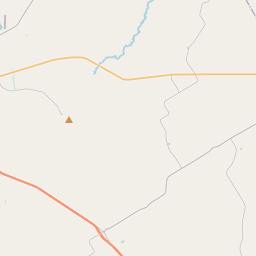Old Settlers and Veterans Association of Falls County
Historical marker location:






Some 75 years after pioneers opened this region, the "Old Settlers Association of Falls County" was organized on July 4, 1908. In 1909, the Willis L. Lang Camp of Confederate veterans and the settlers held a joint reunion. Merging later, they chartered the "Old Settlers and Confederate Veterans Association of Falls County" in 1911. Goals were to memorialize deceased comrades, honor the pioneers, and preserve southern history. Signing the charter where John M. Jolly, Edmund Pierson, and J. H. Robertson of Marlin; R. B. Bratton of Kosse; N. R. Watkins and F. O. Porter of Lott. This 17.9-acre permanent reunion ground was acquired in 1912 from the family of J. K. Tomlinson, an 1858 settler from Georgia who, along with a son William, enlisted and died in the Civil War. In 1936, an historic log cabin was relocated here--to exhibit pioneer memorabilia. A new charter in 1946 renamed the organization the "Old Settlers and Veterans Association," signifying its opening to the soldiers of later wars. Patriotism, education and historical preservation are still stressed. Falls Countians in state and national life reflect ideals which have been instilled by this association
April 12, 1861: The Civil War begins with the Confederate attack on Fort Sumter, located in South Carolina's Charleston Harbor.
April 15, 1861: President Abraham Lincoln issues a call for 75,000 volunteers to serve in the Union Army to suppress the rebellion.
May 24, 1861: The first major land battle, known as the First Battle of Bull Run (or First Battle of Manassas), takes place in Virginia. It ends in Confederate victory.
September 17, 1862: The Battle of Antietam in Maryland becomes the bloodiest single-day battle in American history, with heavy casualties on both sides. The Union forces, commanded by General George McClellan, manage to halt Confederate General Robert E. Lee's advance into Union territory.
January 1, 1863: President Lincoln issues the Emancipation Proclamation, declaring that all slaves in Confederate-held territories are to be set free. However, the proclamation does not immediately free all slaves in the United States.
July 1-3, 1863: The Battle of Gettysburg in Pennsylvania takes place, resulting in a significant Union victory and inflicting heavy casualties on Confederate forces. It marks a turning point in the war.
November 19, 1863: President Lincoln delivers the Gettysburg Address, emphasizing the principles of liberty, equality, and the preservation of the Union.
April 9, 1865: General Robert E. Lee surrenders to Union General Ulysses S. Grant at Appomattox Court House in Virginia, effectively ending the Civil War.
April 14, 1865: President Lincoln is assassinated by John Wilkes Booth while attending a play at Ford's Theatre in Washington, D.C.
May 10, 1865: Confederate President Jefferson Davis is captured, signaling the collapse of the Confederate government.
December 6, 1865: The Thirteenth Amendment to the United States Constitution is ratified, officially abolishing slavery throughout the country.
While this timeline provides an overview of key events, it is important to note that the Civil War spanned over four years, from 1861 to 1865, and encompassed numerous battles, campaigns, and political developments that shaped the course of American history.
As one of the most visible programs of the Texas Historical Commission (THC), historical markers commemorate diverse topics in Texas history, including: the history and architecture of houses, commercial and public buildings, religious congregations, and military sites; events that changed the course of local and state history; and individuals who have made lasting contributions to the state, community organizations, and businesses.
The Johnson Space Center, located in Houston, played a crucial role in the development of the U.S. space program. It was here that NASA trained its astronauts and mission control teams, and it continues to be an important center for space research and exploration today.
In the early 19th century, European settlers began to arrive in Falls County, drawn by the fertile soil and abundant natural resources. The county was officially established in 1850, and the town of Marlin was designated as the county seat. The development of railroads during this period further spurred the growth of the region, allowing for easier transportation of goods and people.
During the Civil War, Falls County, like many other parts of Texas, heavily supported the Confederacy. The economy revolved around agriculture, especially cotton plantations, which relied on enslaved labor. However, the war brought multiple challenges to the county, including shortages of supplies and soldiers, as well as occasional conflicts with Union forces.
In the post-war era, Falls County faced a period of rebuilding and diversification. The reliance on cotton continued, but other industries such as livestock ranching and oil extraction began to play a significant role in the county's economy. Over the years, Falls County has gone through various changes and challenges, but it remains a vibrant community with a rich history tied to the land and its people.
Falls County Timeline
This timeline provides a condensed summary of the historical journey of Falls County, Texas.
- 1837 - Falls County is established by the Republic of Texas
- 1838 - The county seat is established in Perryville
- 1850 - Marlin becomes the new county seat
- 1861-1865 - Falls County residents serve in the Civil War
- 1873 - The Houston and Texas Central Railway reaches Marlin
- 1886 - The town of Lott is incorporated
- 1896 - The Marlin Female Institute is established
- 1910 - A serious cotton boll weevil infestation hits the county
- 1921 - The infamous Klan trials take place in Marlin
- 1953 - Falls County dedicates a new courthouse
- 1975 - Marlin State Hospital is designated a National Historic Landmark
- 1996 - The Marlin Democrat newspaper celebrates its 125th anniversary
- 2018 - Falls County celebrates its 180th anniversary